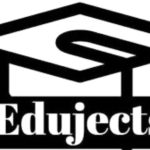The central focus this term is on Statistics and Practical Mathematics. Students will learn how to gather, organize, analyze, and interpret data. The term also reinforces key mathematical operations and introduces foundational concepts in trigonometry and variation, all of which are essential for success in the BECE and future mathematics learning.
Key Topics and Why They Matter
- Statistics
- Students learn how to calculate mean, median, mode, and range from raw data and frequency tables.
- This topic builds numeracy and prepares students to understand data in real-world situations, such as school records, business figures, or scientific results.
- Data Presentation
- Topics include drawing and interpreting frequency tables, pictograms, bar charts, and pie charts.
- These are essential visual tools that improve a student’s ability to communicate and interpret data effectively.
- Variation (Direct, Inverse, Joint, Partial)
- Introduces relationships between changing quantities.
- This understanding is crucial in algebra, physics, and everyday scenarios such as budgeting and rates.
- Approximation
- Focuses on rounding numbers to decimal places, significant figures, and required accuracy.
- Encourages precision and estimation, which are useful in measurement and real-life decision-making.
- Fractions (Revision)
- Covers operations with fractions and introduces algebraic fractions.
- Reinforces foundational arithmetic and transitions into more abstract algebraic reasoning.
- Right-Angled Triangles
- Explores the Pythagorean Theorem and basic trigonometric ratios (sine, cosine, tangent).
- Builds spatial reasoning and prepares students for geometry and trigonometry in senior school.
Important Learning Objectives for Students
By the end of the term, students should be able to:
- Calculate statistical values (mean, median, mode, range) from raw and grouped data.
- Organize and present data in various formats, including charts and tables.
- Interpret information from visual data presentations.
- Solve mathematical problems involving direct, inverse, joint, and partial variations.
- Round numbers correctly and use approximation in problem-solving.
- Perform all basic operations with fractions, including simplifying algebraic expressions.
- Apply the Pythagorean Theorem and identify trigonometric ratios in right-angled triangles.
Skills Students Are Expected to Develop
- Data interpretation and critical thinking
- Visual communication through charts and graphs
- Logical reasoning and algebraic manipulation
- Estimation and numerical accuracy
- Spatial reasoning and geometric understanding
- Confidence in solving real-world mathematical problems
How These Topics Build on Prior Knowledge
- Reinforces foundational skills taught in JSS1 and JSS2, particularly in arithmetic and algebra.
- Expands students’ abilities to handle real-life mathematical scenarios.
- Lays a solid foundation for more advanced mathematical concepts in SS1, such as advanced statistics, trigonometry, and functions.
This term’s work strengthens students’ confidence in handling numbers, interpreting data, and applying mathematics to real-life problems. These are critical skills for passing the BECE and transitioning successfully to senior secondary school. The emphasis on problem-solving and logical thinking also supports success in other subjects such as science, economics, and technology.

